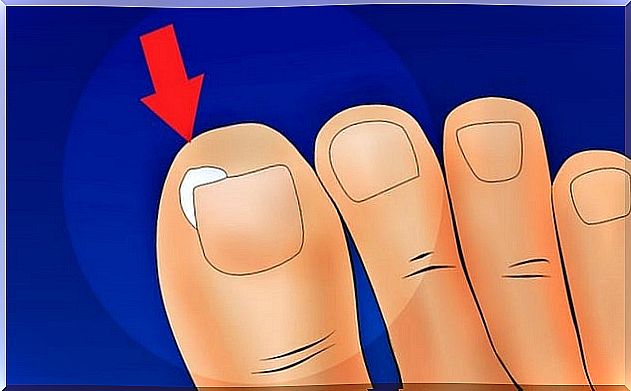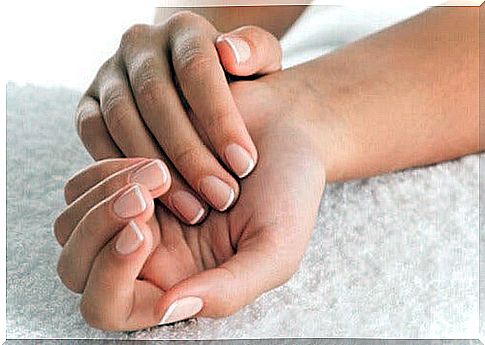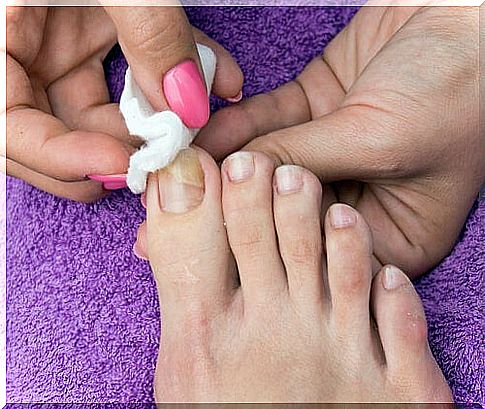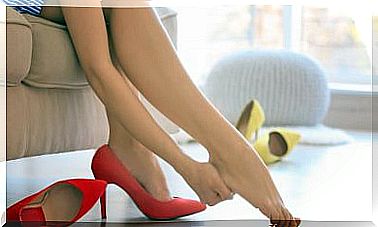How To Avoid Ingrown Toenails
Although toenails are more common, fingernails can too. It is essential to cut them straight to prevent them from burying into the skin and to take certain measures, when the problem occurs, to help their recovery.

Ingrown toenails are very painful and can make walking a nightmare if we have to do it for long periods of time or with shoes that are too tight. However, although it is a problem that occurs more frequently in the toes, they can also form in the hands.
While the discomfort can be relieved with some care, in some cases, if the pain is severe or spreading, medical attention will most likely be required. In this article we detail some tips to avoid this very common problem. Take note!
Ingrown nails: why they occur
Nails play a very important role, because they function as a barrier to prevent the entry of bacteria into the body. Therefore, in addition to cutting them for an aesthetic issue, keeping them in good condition is essential for our health and hygiene.
It is very important to know that a badly cut nail can cause many problems, including “ingrown”. According to the Mayo Clinic, this occurs when the top or side of a toenail digs into the skin. It usually occurs on the big toe.
When the nails are ingrown, in addition to pain, we can see redness and inflammation in the finger area due to pressure. In more extreme cases, when there is infection, pus is very likely to form. It is worth mentioning that wearing shoes that are too tight, or that end to a point, exacerbate the problem and can make walking very painful.
How to avoid ingrown toenails?
Nail care is essential, not only if we are prone to ingrown. In addition, the process is not a complicated task and it does not require spending too much money. If we are constant, we can do it ourselves at home. Here are some tips to achieve it.
- Nails should be trimmed approximately every 3 weeks or every month.
- Having the correct tools and being extremely careful is very important. At the same time, it is important to keep the nails short and straight to avoid embedding them in the fingers.
- Remember not to get a pedicure while the nail is ingrown, as it can aggravate the condition. The first thing to do is reduce swelling and infection.
- For as long as it takes to heal, wear wide-fit shoes. In this way, you will avoid pain or the nail from becoming more red.
- Wear shoes only when necessary: at home you can go barefoot or with something that reveals your toes.
Cut the nails correctly so that they do not ingrown

If we are prone to ingrown nails, we must pay close attention when cutting them. We can go to a professional, or we can be very careful to avoid additional pain. On the other hand, there is the possibility of doing a treatment at home to contribute to the health of the nails. It is very simple!
What do you need?
- Exfoliating soap.
- Cuticle remover.
- Straight nail clippers.
- Pliers.
- Thick cardboard file.
- Orange stick.
How to do it?
- Before starting, we recommend that you soak your feet. To warm water you can add lavender or eucalyptus flowers, Epsom salts, etc. Allow about 15 minutes for the nails to soften and cut them easier.
- Second, exfoliate the feet well — with an emphasis on the heels — and massage. Don’t forget to rinse and dry well with a soft towel.
- Next, apply the cuticle remover to soften the area and remove excess with the orange stick.
- Cut the nails and make sure they are square. You can help yourself with the file. They shouldn’t be too short at the corners, because that increases the chance that they will incarnate.
The cotton ball technique for ingrown toenails

When we suffer because a nail has become ingrown and we cannot go to a podiatrist, there are home methods that can be very useful, such as the cotton ball technique. We tell you how to do this practice.
What do you need?
- A cotton ball.
- Tweezers.
- Nail clipper.
- Ointment for infections.
- Band.
What should you do?
- First, you should soak your feet well in water as hot as possible with a handful of Epsom salts, for at least 15 minutes. This, in addition to softening the nail, serves to prevent infections.
- Next, cut your nails square and with no sharp points near the edges of your finger.
- With the tweezers, slightly lift the ingrown toenail and place the small cotton ball inside.
- Then press lightly so that it does not come off and cut the leftovers beyond the finger.
- Apply an ointment or cream to prevent infection and bandage as tightly as possible, being careful not to interfere with blood circulation.
- Try not to wear too tight shoes or socks for the next few days.
- Lastly, change the cotton every day or every other day.
It might interest you: Do you want to improve the appearance of your nails? Don’t miss these 9 tips
Other home remedies for ingrown toenails
In addition to the aforementioned and knowing the importance of cutting nails correctly, there are other home remedies that can be of help in this situation. For example, to cut the affected nail properly, these measures can be followed.
- Use water with iodine solution. Soaking your feet in a bowl of warm water and a measure of povidone-iodine solution will help remove bacteria from your feet and nail. Iodine is an antimicrobial capable of fighting fungi and infections.
- Place lemon. The acid in this citric also has antimicrobial properties and can help you prepare the nail before cutting it. To apply, cut a lemon wedge and place it on the affected finger. Wrap with a bandage and let it act overnight.
- Essential oils. For this purpose, it is advisable to use tea tree oil – antibacterial and antifungal. To hydrate and soften the skin, you could also use baby oil.
As you can see, there are several recommendations that you can take into account both to prevent the problem and to help its recovery. Follow these tips and do not forget to consult your doctor if the pain is very strong and does not subside after trying these home remedies.









